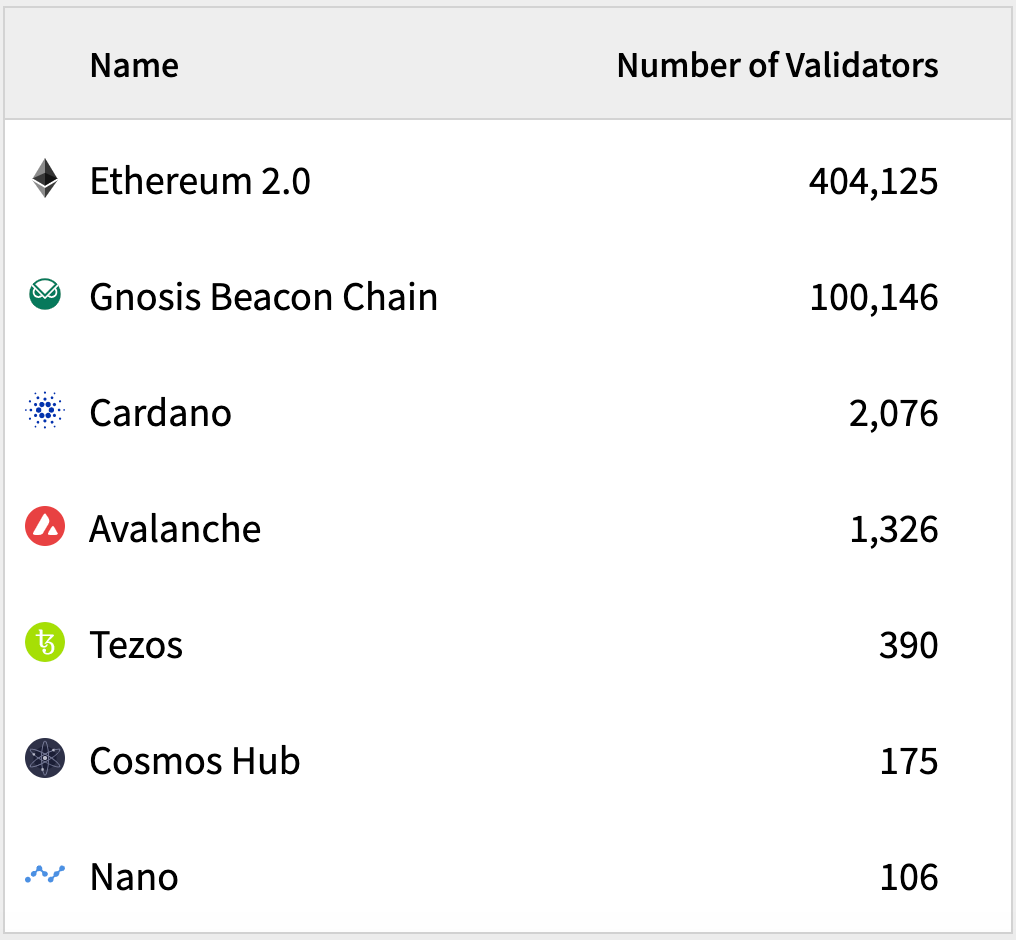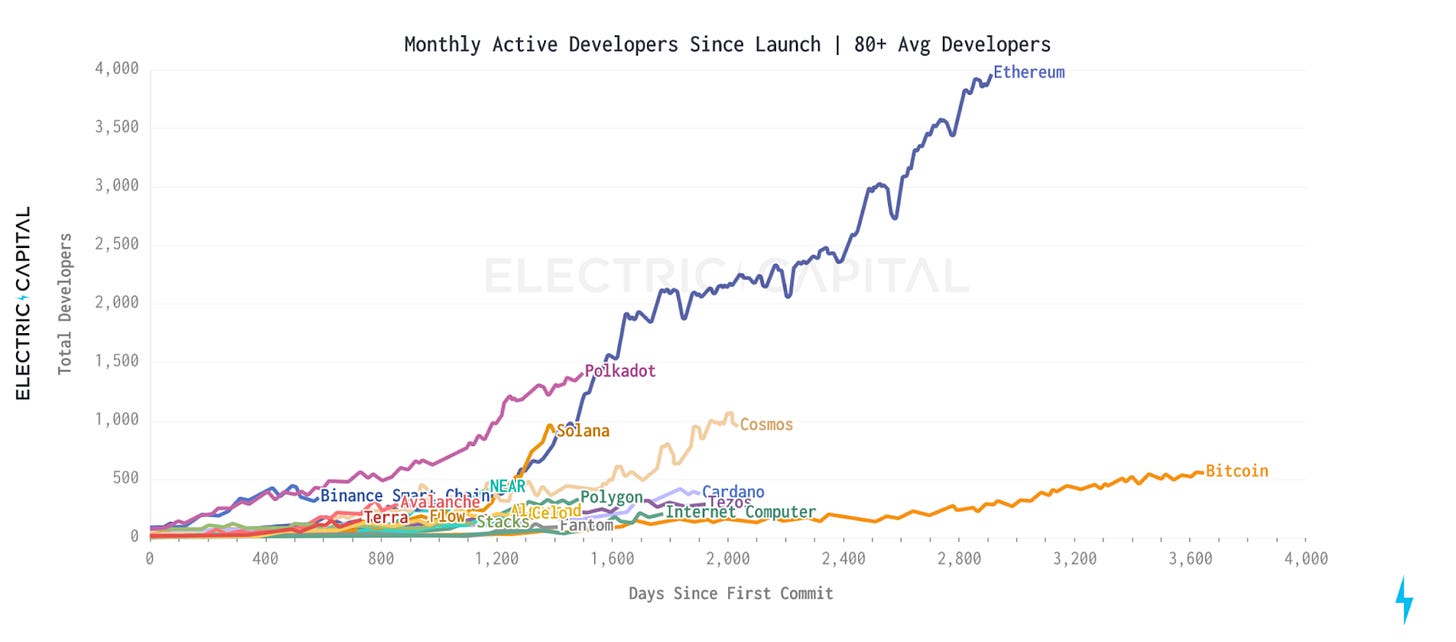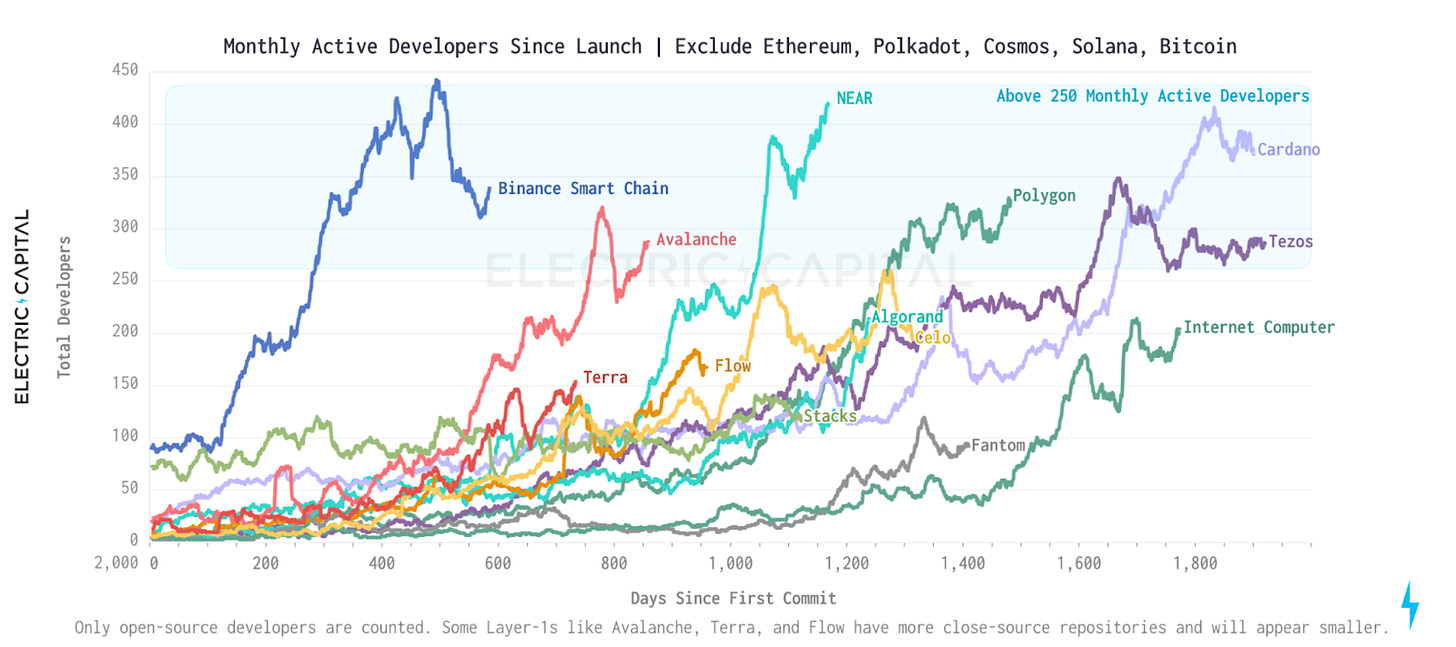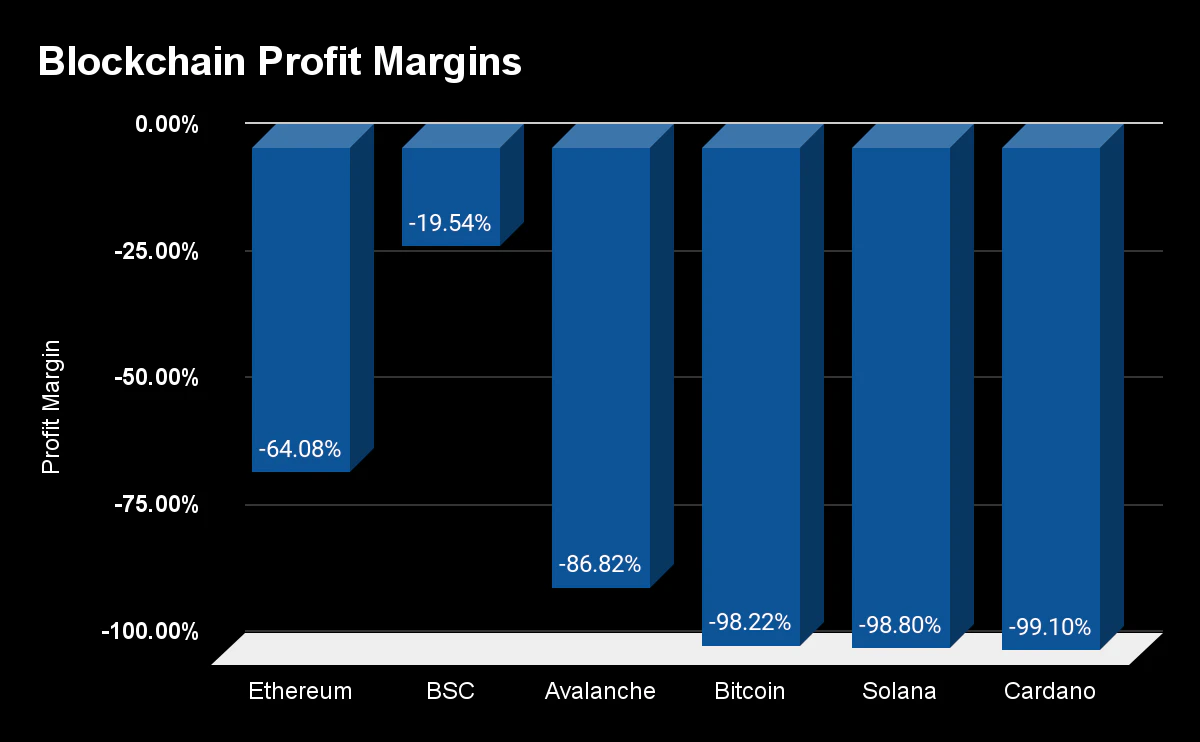Original: https://newsletter.banklesshq.com/p/a-framework-for-evaluating-layer?utm_source=substack&utm_medium=email
By Lucas Campbell
About a year ago, a well-known crypto fund commissioned me to write a report evaluating the status of Layer 1 that may challenge Ethereum.
They have an argument: the Ethereum gas fee problem will persist, users will not be able to afford it, and activity will flow to other chains.
The question is: which chain does it go to?
This was before the rapid rise of alternative layer 1s - such as Avalanche, Solana, and Terra.
At the time, I found it difficult to evaluate these emerging platforms with young, untested infrastructure. Native wallets are just launching, exchange support is minimal, and there are hardly any apps on these networks to try out.
But it turns out that the argument is true -- to a point.
Infrastructure builds complete while Ethereum gas costs persist. New users flood into these alternative layer 1 networks. Now, the ecosystem is stronger, with options and metrics to explore.
So I've been thinking about it ever since.
How can you evaluate these things? What is the appropriate framework? What key metrics and fundamentals should investors look for when evaluating Tier 1?
Layer 1—especially smart contract networks—has a large number of variables that can lead to growth.
But what are the quantitative factors we can look for?
Here are the 5 most important questions I ask:
1. Is it safe?
2. Is it decentralized?
3. Is there a developer?
4. Is it used?
5. Is it profitable?
So let’s unpack these layer 1 blockchain network related questions one by one…
is it safe
Security should always be a top priority when evaluating any Tier 1.
The core of the blockchain is the value settlement layer. If the settlement layer is not secure, it has no value. You need assurance that when you transact on the network, your transaction is final. There should be no chance of being reversed by bad actors.
There are different ways to measure security depending on the underlying consensus mechanism, but the ultimate goal is simple - a blockchain network needs unassailable settlement guarantees. A Settlement Guarantee is a guarantee held by a trader that the network will not reverse a transaction - it is final.
This is an important theme when we look at the broader first layer. I recommend reading Nic Carter's When We Look at the Broader First Layer, This Is an Important Theme. I recommend reading It's the settlement assurances, stupid by Nic Carter for a further breakdown.
A key variable in measuring settlement assurance is ledger cost.
How much does it cost to take over the network?
You can measure this by determining how much money is paid to validators to submit valid, honest blocks.
What is the total fee income of the network?
This is the amount paid to validators to ensure that all transactions are final.
Networks that pay higher fee income to validators are more secure and can provide higher settlement guarantees. Miners and validators have strong incentives to submit, verify and maintain legitimate blocks.
…but what if the network only has 21 validators getting all the revenue? This leads to the second question.
Is it decentralized?
A core principle of Web3 is decentralization. It is closely related to security and is also in line with the whole ethos of the blockchain phenomenon.
Layer 1 should be sufficiently decentralized. No single actor or entity should control the network. Anyone should have the ability to participate in validating (mining/staking) or maintaining the ledger (running a node).
It shouldn't be closed to a specific group of people.
If so, we might as well use AWS directly and move on.
A quantitative way to measure this might be through the number of nodes and/or validators in the network.
Below is a brief summary of the main proof-of-stake protocols.

Source: Stakers.Info
If someone can't run a node, it's permissioned, not decentralized.
What's the point if it's not decentralized?
Is there a developer?
Security and decentralization are fundamental properties of any Layer 1.
Blockchain networks need these properties to achieve the core vision of a secure, public settlement layer that accommodates all of crypto, decentralized finance, and web3.
Once those boxes are checked, it means people can build on them safely and securely.
They can trust that the network won't go down, roll back, or get hacked.
This brings us to the next component of the pyramid. Has anyone built this network on top of it?
Without developers, there are no applications.
Without applications, there are no users.
No users = no value.
Therefore, a strong developer ecosystem is critical to the success of Layer 1.
Fortunately, Electric Capital digs deeper into the developer ecosystem each year through a different network.
Here's a snapshot of monthly active developers from the 2021 report.

Source: Electric Capital
Ethereum currently dominates the developer ecosystem.
But even newer alternative smart contract platforms have significantly outpaced bitcoin in developer activity. This makes sense given the surface area smart contracts provide developers - they can build almost anything with them. Building anything cool on Bitcoin is much harder.
That said, for those interested in zooming in, here's a more detailed view of the non-Ethereum contract ecosystem.

Is there a demand for block space?
All right. We have now ticked some major boxes for our evaluation framework.
If the web is secure, decentralized, and there are developers building applications on top of it, it's time to start looking at whether anyone is actually using those applications.
More importantly: Are there any users willing to pay for these apps?
Blockchain is in the business of selling blocks. They serve the unstoppable, decentralized transfer of value across the Internet.
Therefore, the demand for block space is probably the most fundamental way to know whether layer 1 has value.
This is a clear indicator of whether there is a need to transfer value on the network. This can be measured in a number of ways, from network utilization to fees paid to validators/miners.
Each of them has its own advantages and disadvantages, but taken together, it can give you a clearer picture of whether there is a real need for the network.
But at the end of the day, if no one is willing to buy the blocks, then it is not a valuable blockchain ecosystem.
This leads us to the last question in our framework.
Is it profitable?
If block space is required, there is only one element left to process.
Is Blockchain Profitable?
I wrote this article in depth a few months ago. But even with the above indicators, you can analyze whether the blockchain is running a profitable business.
In short, you should figure out if the blockchain is generating more money for securities issuance than it is for trading revenue.
Interestingly, no blockchain is actually profitable right now — not even close to it.

Source: Bankless
In general, today's blockchain networks spend more on security costs than they bring in.
That's okay -- the ecosystem is still young. There is a lot of development that needs to be done. There are more people joining the technology.
But only one blockchain currently has a clear path to profitability.
in conclusion
Evaluating any layer 1 is difficult; especially for smart contract platforms.
These are new open platforms for the next generation of Internet applications.
Like web2, there will be trillion dollar companies built on this infrastructure.
This begs the question: How much is this infrastructure worth?
Which one will come out on top?
Use these questions to frame your assessment.
 Joy
Joy








